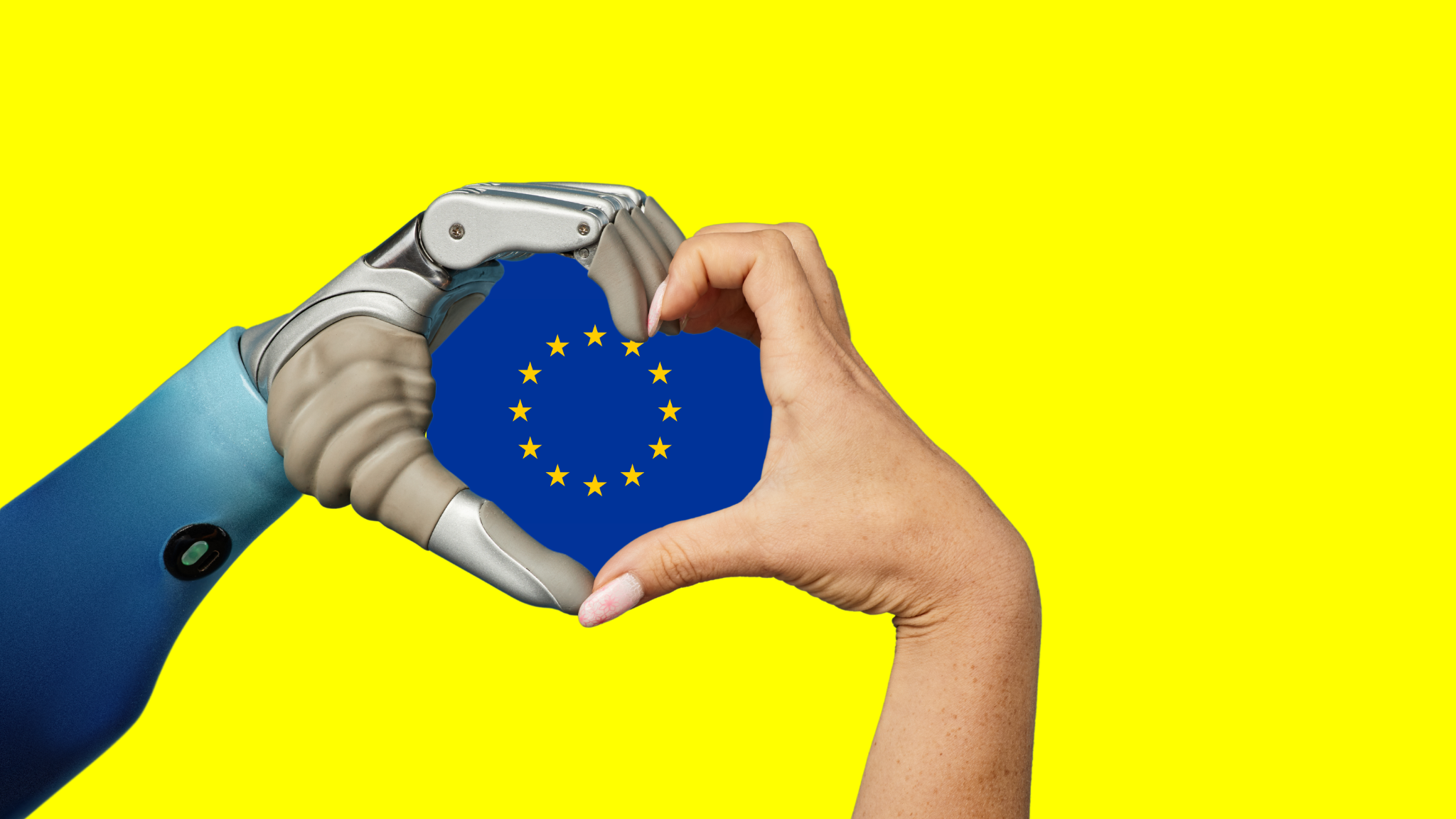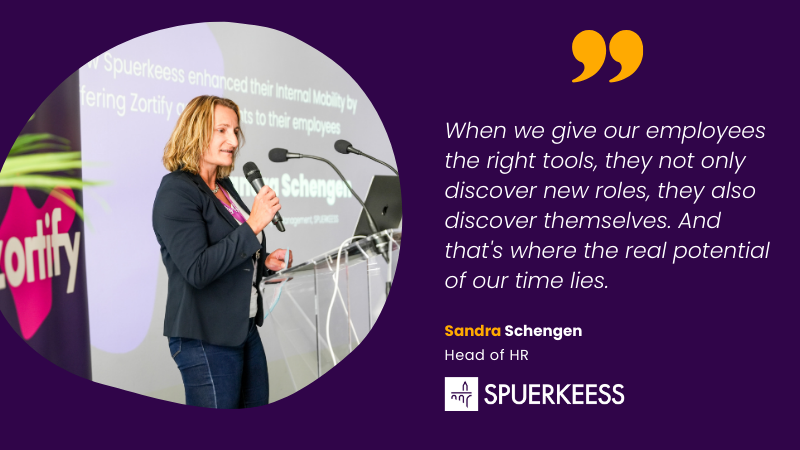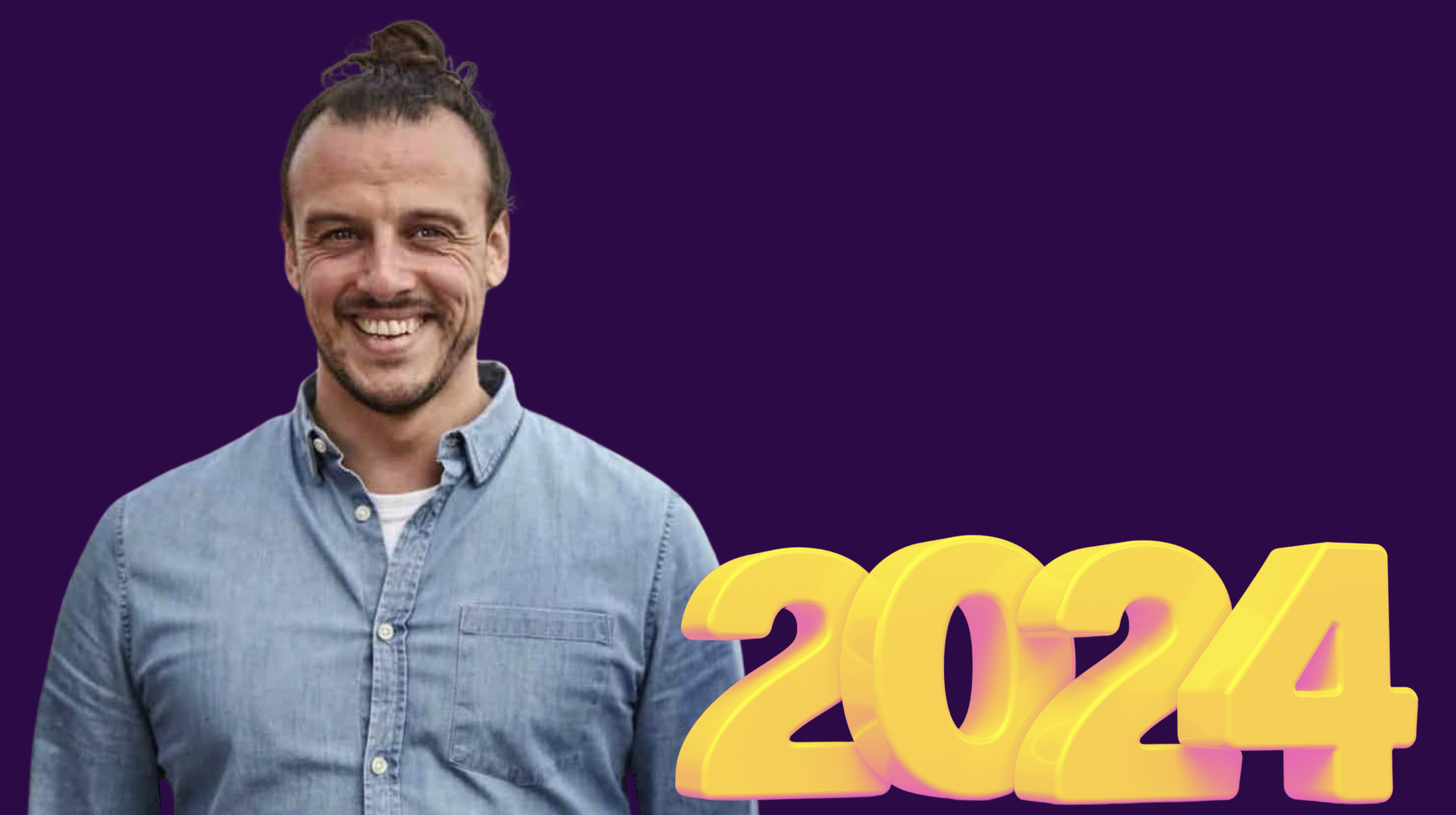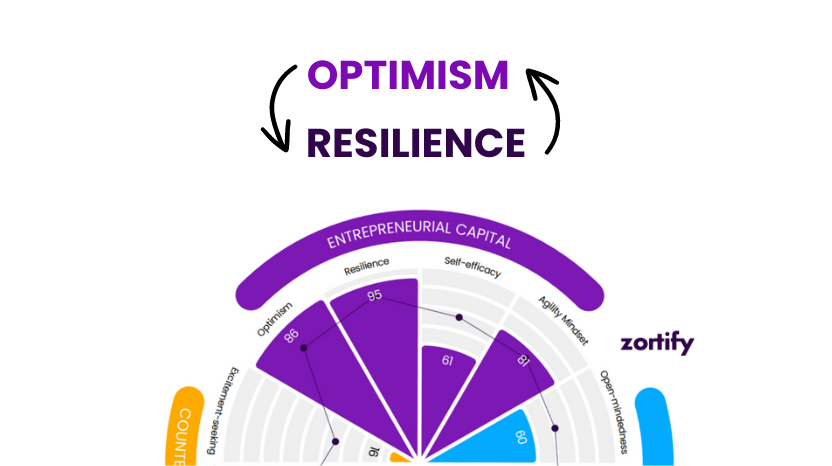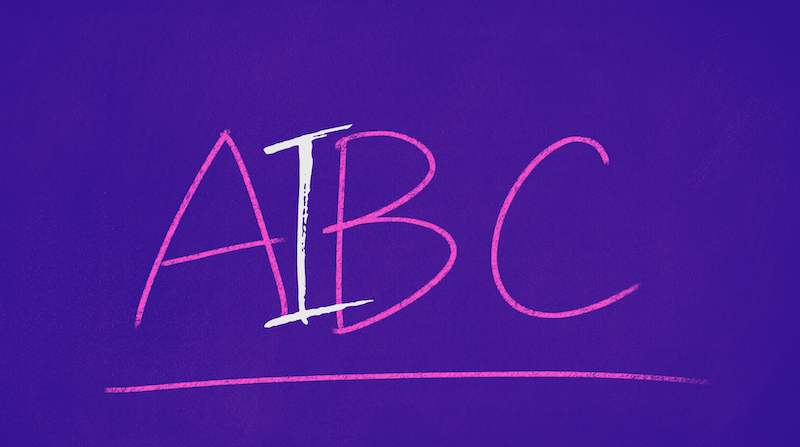Your Gut Feeling is Gutting Your Talent Pipeline
A New Way of Looking at HR Efficiency
We think we’re thorough. Our HR processes are well thought-out. Our hiring decisions are sound. Research says: We’re wrong.
The uncomfortable truth: our brain makes a judgment about our conversation partner in the first few seconds. Even if the final decision for or against an applicant is not made until minutes later, the course has already been set. The rest of the interview? – Simply a search for confirmation. We are not looking for the best candidate, but for reasons why our gut feeling is right.
No second chance to make a first impression? – There is!
The mantra “There is no second chance for a first impression” is not only wrong in recruiting, it is reckless. It justifies hasty gut decisions and superficial judgments. The fact is that first impressions are almost always incomplete and often irrelevant.
What happens in our heads in the first few seconds? We evaluate voice, appearance, handshake, eye contact – all things that have little or nothing to do with job performance. 48% of HR decision-makers openly admit that prejudices influence their decisions. Realistically, this figure is closer to 100%.
The next 30 minutes of the interview are therefore not much more than a stage for confirmation bias.
- The brilliant but introverted developer? “Not present enough.”
- The experienced executive with an accent? “Not a strong communicator.”
This is not an exception. This is the system. The pressure is real, as is the self-deception. Time-to-hire is tracked, jobs actually have to be filled yesterday, and we tell ourselves we are thorough. But we are not. Above all, we are thoroughly biased.
AI breaks the cycle
While we supposedly carefully screen applicants, modern AI analyzes hundreds of relevant personality traits in a focused, precise and objective manner within the very same time period. What our intuition compromises, AI perfects in milliseconds. It gives every candidate a real second chance. Based on data, not prejudice. While we search for confirmation, AI emotionlessly scans what really counts.
When humans reach their limits and machines shine
Our brains are still optimized for the Stone Age, i.e. for quick friend-foe recognition, not for differentiated HR decisions in a globalized knowledge society. Unconscious Bias is an evolutionary feature, not a bug that can just be fixed.
What AI can do in seconds:
- Analyze hundreds of personality dimensions
- Assessment without cultural bias
- Consistent standards for all applicants
- Prediction of job performance based on valid data
What people do in the same time:
“He seems likeable.”
“She doesn’t fit into the team.”
In short: we fall for our prejudices based on skin color, gender, accent or similarities between the applicant and our own CV. The “cultural fit” is often just a cover for these unconscious prejudices. Universities attended together, familiar names, similar biographies: all this acts as a filter. Unfortunately, it is the wrong one.
The question to CEOs: Would you invest like this?
Would you invest a million euros on gut feeling? Without data, without analysis, without risk assessment?
No?
So why do you make the most important business decision – the one about your staff – like an impulse purchase? Every bad hire costs you 1.5 to 3 times the annual salary. In the case of managers, it can quickly add up to over €200,000 per mistake. Human intuition” is the most expensive poor decision your company makes. You invest six-figure amounts in employer branding, while your selection process scares top talent away. Rejected applicants talk to each other. Bad experiences go viral – and cost you the next generation of talent.
AI does not make us unemployed, it makes us better.
AI does not replace people. It replaces bad human decisions. A good AI analyzes more data in seconds than we humans do in an entire conversation. Not because it is smarter, but because it is not distracted. Modern AI-supported diagnostics filter precisely, efficiently and objectively. NLP technology recognizes personality patterns and skills while we are still thinking about whether the handshake was firm enough. The game changer: when AI makes the pre-selection, we are no longer evaluating “a person”, but “a promising candidate who has already been objectively assessed”. Our bias no longer has a chance to shape the conversation from second one.
Strategies for the AI-supported revolution in recruitment
The human touch is out of place in recruiting. The new generation of applicants expect fairness, not folklore. They want to be evaluated for what they can do, not for how familiar they seem to us. Companies with AI-supported recruiting will therefore systematically attract the better talent.
Here’s how you can get started:
- Objective data instead of subjective impressions: Define measurable criteria for each role. Let AI evaluate before humans decide.
- Intelligent pre-selection = efficiency: Use AI for initial, data-based filtering. Then you can concentrate 100% on the really promising candidates. This way, you combine machine precision with human judgment. The process is quick and thorough.
- Feedback loops: Measure the success of your hires after six months. Which of your gut decisions has proven successful? (The truth might hurt).
- Diversity by design: Integrate fairness directly into the process. Good AI is not neutral, it is intentionally inclusive. Choose providers wisely. To the checklist
The moment of truth
We have two options:
Option 1: Carry on as before. Convince ourselves that 30 years of recruiting experience is more objective than data-based analysis. Watch systematic bias cost our team millions and drive the best talent to the competition.
Option 2: Gather the courage to recognize our own limitations and use AI for what it is: a tool that does in seconds what humans overlook in minutes. Objective pre-selection that gives every candidate the fair chance he or she deserves.
The decision is up to us. But if we now make it based on gut feeling again, we have not yet understood this text.
If your CHRO is still counting heads, you’re already losing the best ones!
The figures are clear – and alarming: while IT and marketing are allocated 3.14% and 7.5% of turnover each, HR receives a mere 0.8% on average. This is shown by the current Gartner study “2025 CHRO Budget Benchmarks”.
EU AI Act – HR Must Deliver on AI – But Not Alone
As the possibilities of AI grow, so do the requirements for the careful and responsible use of AI systems. The EU AI Act, which has been gradually coming into force since February of this year, places greater responsibility on companies and makes AI expertise not just a competitive advantage, but a legal obligation.
“We don’t just invest in technology – we invest in our people.”
Sandra, Spuerkeess is known for stability and tradition. At the same time, you focus heavily on innovation in your HR strategy. What was the reason for rethinking the topic of internal mobility?
Spuerkeess has always successfully adapted to changing market conditions.
Personality vs. hard skills:
Why companies often make the wrong decisions despite knowing better
A recent study in which we surveyed over 100 HR experts in German companies clearly shows that the majority of companies are aware of the importance of personality and soft skills in recruiting. Many HR professionals are also aware of their own shortcomings when it comes to finding the right talent for the right positions. At the same time, they are hesitant about using the latest AI technology to make better decisions. The fact that the big American tech providers in particular are focusing on AI is certainly a major factor in this. It is therefore time to focus on what ethical AI made in the EU can do for recruiting.
What drives hiring and firing decisions?
What criteria do HR managers use to select new employees? – 62% of respondents stated that they prioritize personality traits such as soft skills and overall character. In contrast, 38 percent prioritize professional skills such as qualifications and specialist knowledge.
When asked about the reasons why companies part ways with employees, 72% of the HR experts surveyed said that problematic individual characteristics or behavior were the most common reason for employee dismissal. Only 28% cited inadequate professional skills or performance as the main reason.
When asked who is best at assessing personality traits, the figures were surprising: Only 17% of respondents trust their own judgment. In turn, only two percent believe that a highly specialized AI alone can make this assessment objectively and reliably. The majority (79%) prefer a combination of human judgment and AI-supported diagnostics.
Low success rate for personalities
The figures reveal a significant discrepancy: although 62% of companies consider personal characteristics to be the most important factor in recruitment, the success rate remains low. This is shown by the high termination rate due to problematic behavior (72%).
A core problem lies in the subjective assessment of soft skills and character traits. Unconscious bias can lead to recruiters making the wrong decisions despite their best intentions.
What companies can do
Recognize and minimize bias: Consciously dealing with cognitive bias can significantly improve the quality of decisions. We have summarized the 14 most important bias types here.
Use human-AI combination: Modern, highly specialized AI diagnostics can help to assess personality traits more objectively and accurately. According to current research, the latest AI models already achieve ten times the neuronal capacity of the human brain (source). With the help of AI, recruiters can conduct scientifically sound assessments within a fraction of the time and at a fraction of the cost of traditional assessment centers. And this can be done at a very early stage in the application process.
Introduce EU AI Act-compliant solutions: The use of AI in recruiting should be based on the requirements of the EU AI Act to ensure transparency and fairness. Particularly in view of the political developments in the USA, it is advisable to rely on solutions made in Europe.
Conclusion
AI-based diagnostics can significantly reduce wrong assessments and enable companies to make better hiring decisions in the long term. Everyone benefits from the responsible use of technology – HR professionals in their day-to-day work, applicants looking for the perfect job and companies that want and need to retain skilled workers in the long term.
Now is the right time to make recruiting processes data-driven and future-proof. We don’t have to look overseas to do this, but can rely confidently and with a clear conscience on solutions made in the EU.
About the study: As part of the “Recruiting Trends Conference 2025”, we conducted a quantitative online survey in which 110 experts from HR management, recruiting and talent acquisition took part. The sample comprised 65 female and 45 male participants from companies in Germany. You can download a summary of the study here.
73% of all talents are ready to make a move – but only if you do!
The shortage of skilled workers is reaching new record levels: according to a study by ManpowerGroup, 86% of German companies are struggling to find talent. When promising candidates suddenly drop out or are lured away by counter-offers, it’s not only frustrating but also expensive. Unfortunately, this is exactly what often happens
Finding the right talent does not allow for compromises!
Applicants want a fast, appreciative application process – companies, on the other hand, need a lot of information to prevent wrong hires, as well as efficient and structured processes to keep costs low and not make themselves liable to legal action. How does HR find the balance – and the best talent at the same time?
Recruiting in transition: Why “Hire & Pray” is no longer enough
It is said that diamonds are only created under pressure. We wouldn’t agree with this saying when it comes to recruiting. Under pressure, our judgment suffers. Under pressure, suitable candidates are more easily overlooked or applicants are hired overhastily who later turn out not to be suitable. The cost of bad hires runs into the hundreds of thousands.
73% of all talents are ready to make a move – but only if you do!
The shortage of skilled workers is reaching new record levels: according to a study by ManpowerGroup, 86% of German companies are struggling to find talent. When promising candidates suddenly drop out or are lured away by counter-offers, it’s not only frustrating but also expensive. Unfortunately, this is exactly what often happens.
According to Greenhouse’s Candidate Experience Report, the majority of candidates find the recruitment process frustrating, unfair and inefficient – despite the high demand for labor. Other studies show a similar picture: according to “JobTeaser”, 41% of applicants cite excessively long decision-making processes as the main reason for abandoning an application process. Negative reviews or a poor company reputation can also act as a deterrent and lead to dropouts.
The hidden costs of a lost candidate
Candidates dropping out has far-ranging consequences:
- Time and money invested in the recruitment process is lost.
- Teams have to make do without the necessary support for longer, which can affect productivity.
- Frequent dropouts in application processes damage the company’s reputation and discourage further applicants.
The reason why this keeps happening: Many companies are too passive throughout the entire process. Publish a job advertisement, then wait and see? That’s no longer enough. Successful recruiting requires proactive strategies in order to attract top talent and not have to rely on less qualified applicants.
The active, strategic search for the best candidates should begin long before the actual application process. Thanks to new AI-based technologies, there are now innovative ways to target potential talent. According to the LinkedIn Talent Trends Report 2024, 73% of the global workforce is made up of passive candidates – people who are not actively looking but would still be willing to change jobs. A huge pool from which recruiters can draw.
Active sourcing reduces costs and increases retention
Companies that actively approach talent benefit from lower time-to-hire and cost-per-hire values. At the same time, candidate satisfaction increases, provided they are approached individually and not flooded with generic recruitment emails.
The key word is personalization. And no, a personal address in an email that is otherwise designed for mass mailing is not enough. Companies that show genuine interest in the skills and experience of applicants have a better chance of receiving a positive response. The second contact should therefore be personal and conversational. AI tools help to initiate a mutually beneficial exchange and combine data-based analysis with human relationship management.
How exactly do they do this?
The AI boost for active recruiting
This is where our AI-based personality analysis from Zortify comes into play: Desired candidates first answer a set of open questions, the answers to which are analyzed by the AI. Key personality traits such as the Big Five, entrepreneurial thinking or self-efficacy are assessed.
The analysis, including the respective answers, provides a wonderful basis for an in-depth discussion with the candidates and a structured interview: To what extent are individual answers particularly reflected in the results of the analysis? Which results on self-perception and assessment by the AI surprise them and why? In which areas of the company can they be most effective due to certain characteristics? And where do they see potential for development? At the same time, the analysis is a filter for companies to decide whether the candidates who appear promising at first glance really fit the role and the company.
The de-briefing can take place in three ways:
- The recruiting team discusses the results directly with the candidates.
- The recruiting team evaluates the results together with Zortify and receives recommendations for action.
- Zortify takes over the de-briefing.
The aim is not only to make interview processes more efficient, but also to improve their quality – through clear criteria and individual questions. If the profile is not ideal, the analysis report enables an appreciative, data-based refusal. This not only saves our clients 1-2 rounds of interviews, but also the candidates. The latter still take away a positive experience because they gain new insights about themselves and possible professional futures. The importance of this aspect is underlined by the figures from the Greenhouse study: for a good 68% of applicants, constructive feedback increases their motivation to contact the company again at a later date, even in the event of rejection.
Conclusion: Rethinking recruiting
So what does HR need in order to shape the application process in such a way that it not only results in short-term placements with outstanding candidates, but also in sustainable relationships with people in a growing talent pool?
- Rethinking: Less passive recruiting, more active sourcing.
- Personalization: Proactive and personal approach to candidates throughout the entire process.
- Skills development: HR teams need to familiarize themselves with active recruitment strategies and AI tools.
- Gradual technology integration: Use browser-based solutions as a starting point to keep costs low.
- Suitable providers: Choose providers that not only deliver tools, but also offer coaching and ethical advice.
- Focus on people: For both recruiters and candidates, people are the deciding factor.
Companies that base their recruiting strategy on a proactive, people-centered foundation will attract the best talent in the long term. The figures show: Now is the right time to take action.
Finding the right talent does not allow for compromises!
Applicants want a fast, appreciative application process – companies, on the other hand, need a lot of information to prevent wrong hires, as well as efficient and structured processes to keep costs low and not make themselves liable to legal action. How does HR find the balance – and the best talent at the same time?
New Leadership: Nice is the little brother of toxic.
We think it is right and important that we as a society discuss topics such as “toxic masculinity” and clearly name corresponding misconduct as such. Language shapes our being and our consciousness; We can only describe problems and thus make them discussable if we have words for them. Toxic is such an important word.
Recruiting in transition: Why “Hire & Pray” is no longer enough
It is said that diamonds are only created under pressure. We wouldn’t agree with this saying when it comes to recruiting. Under pressure, our judgment suffers. Under pressure, suitable candidates are more easily overlooked or applicants are hired overhastily who later turn out not to be suitable. The cost of bad hires runs into the hundreds of thousands.
Recruiting in transition: Why “Hire & Pray” is no longer enough
It is said that diamonds are only created under pressure. We wouldn’t agree with this saying when it comes to recruiting. Under pressure, our judgment suffers. Under pressure, suitable candidates are more easily overlooked or applicants are hired overhastily who later turn out not to be suitable. The cost of bad hires runs into the hundreds of thousands.
Recruiters are under pressure from many sides. They have to find the best candidates in a competitive market. The willingness of young people in particular to change jobs is higher than ever, as are their demands on employers. These demands are not only directed at the job itself, but also at the application process. Companies that fail in the candidate experience lose the best talent during the selection phase. Decision-makers, on the other hand, expect their recruiting teams to fill positions as seamlessly as possible with talented individuals who are both professionally and personally convincing.
In a survey conducted by the Society for Human Resource Management, 53 percent of recruiters surveyed stated that the stress level in their job has increased compared to the previous year. And it continues to rise with every unfilled or incorrectly filled position.
We should be talking about resilience now at the latest.
And in its actual meaning. Because contrary to what is often assumed, resilience does not mean being particularly resistant. Instead, it is the ability to pick yourself up again after setbacks and look ahead with optimism. “Ability to recover” is an excellent translation.
Resilience is a psychological resource that people can ideally activate reliably. At the same time, it is by no means only natural or fixed. We can learn and train resilience. It plays a key role in enabling us to do a good job in challenging environments, in contact with different personalities and in the face of increasingly rapid change. This is another reason why resilience is a sought-after quality that can determine whether we are the perfect fit for a position or not. But also whether we would have been the perfect fit for a position, were rejected and still go into the next job interview with confidence. And whether, when we are on the other side and have to make hiring decisions ourselves, we allow ourselves to be paralyzed by bad hires from the past or consciously remind ourselves of them in order to learn and grow from them.
And whether we do not allow ourselves to be carried away even after overwhelmingly positive experiences. But remain vigilant, focused and self-critical. We conducted a study on this in a call center, the results of which can certainly be applied to recruiting (as a special type of sales). In the study, the top performers showed significantly higher scores for resilience and self-efficacy than those employees who were not convincing on the phone.
Resilience as a top skill
The latest Future of Jobs Report from the World Economic Forum names resilience as the second most important core skill (after analytical thinking) for work in 2025. Companies need resilient people more urgently than ever before – both in recruiting and on the applicant side. The key question is: How can organizations shape the conditions for recruiting teams in such a way that they do not burn out under the increasing pressure, do not become discouraged by failures in a highly competitive and complex environment, in other words become and remain resilient? How do decision-makers, HR management, recruiters and hiring managers find a common understanding to identify the best candidates? And how do resilient recruiters find resilient employees for all roles that need to be filled?
We clearly see companies as being responsible for creating an environment in which employees can use their resources and activate them again and again. The following approaches can be particularly useful with regard to the demands placed on the recruiting team:
Reduce workload with AI
Routine tasks, such as scanning CVs or scheduling interviews, can and should be automated so that recruiters and hiring managers can focus on what comes after the first impression.
Streamline the application process
With the help of AI-based personality diagnostics, key characteristics that go beyond the CV can be identified even before the actual job interview. The Big 5, as well as optimism and resilience, are some of these characteristics. The analysis reports provide recruiters with an excellent basis for deciding who is worth inviting to an interview. Which candidates are worth investing more time in and which are simply not a good fit. This approach benefits both sides. As applicants don’t want to spend an unnecessarily long time in a selection process where their chances of success are close to zero.
Recruiters can also use the reports from the AI analysis to make the following interviews more efficient. The reports we generate with Zortify are based on open text answers from applicants. And therefore provide wonderful starting points for an in-depth dialog. Instead of working through generic questionnaires, recruiters can use the evaluations to ask specific questions about the applicant’s personality, team dynamics and working style.
Backing up decisions with data
The personality data analyzed with the help of AI helps the recruiting team to implement two key aspects of good talent selection. Even under pressure: a consistent focus on the individual and an objective comparison with other candidates. The data enables everyone involved in recruiting to develop a common understanding. And agree on what is important in the further selection process.
For example, a candidate may be perfectly qualified, but not particularly resilient according to the analysis. This is where recruiters need to assess the options: Do we give top priority to skills and prefer to invest in developing the person’s resilience on the job, or do we opt for an applicant with the second-best CV but who has a distinctly resilient personality? – By making these factors discussable and developing a shared understanding of desired qualifications, organizations reduce the pressure on recruiters, decrease bias on all sides and increase the accuracy of hiring predictions.
Creating psychological safety
An environment in which mistakes are named as such, but are also seen as a learning opportunity, reduces the pressure on recruiters and promotes their resilience. Regular feedback loops between hiring managers and executives also help to understand each other’s work and challenges and improve collaboration.
KPIs instead of “hire & pray”
It is clear that the pressure on companies will not decrease in the years to come. On the contrary: Germany will lose seven million skilled workers by 2035 as the baby boomers retire and low birth rates follow. Competition for talent is likely to intensify further. At the same time, technological development is making huge progress. Which on the one hand increases the need for new skills, but can also massively relieve the burden on companies in general and recruiting teams in particular.
AI-based analysis tools can make the recruitment process faster, more targeted and more objective. As a result, recruiters have free resources to take on a proactive role. Instead of constantly reacting to urgent staff shortages, they can focus on the question of which skills and personalities the organization really needs to grow and thrive in the long term. The aim is to move away from a reactive “hire and pray” approach towards proactive, data-driven recruiting that ensures the company’s long-term talent supply. This kind of anticipatory, strategic workforce planning goes far beyond short-term recruitment. And ensures that the right employees with the right skills are in the right place at the right time.
From panic to precision: how data-driven recruiting brings long-term success
A key lever here is the use of data and KPIs. While Sales tracks in detail how effective measures are, this systematic approach is often lacking in Recruiting. However, in order to grow with their tasks instead of cracking, recruiters need to specifically analyze which factors have led to a successful hire or a bad hire. They can significantly increase their success rate by analyzing past wrong decisions, recognizing their own bias and learning from it.
At the same time, they need to develop a deep understanding of the company’s future requirements. This includes not only assessing skills and experience, but also taking into account personality traits, development potential and career paths. In order to anticipate market trends and build talent pools at an early stage. It is more important than ever for recruiters to work closely with managers and colleagues in business development and marketing (employer branding). At first, this may sound like even more work. In fact, this kind of rethinking takes a huge amount of pressure off recruiting teams because it replaces short-term panic with long-term, sound planning. And at best, this leads to smart and sustainable recruiting strategies.
That is, strategies that produce plenty of diamonds even without excessive pressure.
Finding the right talent does not allow for compromises!
Applicants want a fast, appreciative application process – companies, on the other hand, need a lot of information to prevent wrong hires, as well as efficient and structured processes to keep costs low and not make themselves liable to legal action. How does HR find the balance – and the best talent at the same time?
New Leadership: Nice is the little brother of toxic.
We think it is right and important that we as a society discuss topics such as “toxic masculinity” and clearly name corresponding misconduct as such. Language shapes our being and our consciousness; We can only describe problems and thus make them discussable if we have words for them. Toxic is such an important word.
Expensive, unloved employees: How to avoid bad hires
The start of the year traditionally brings movement into the company. Employees leave, others have to fill the gap, and new employees have to be found and trained at the same time. And the question always arises: How do we ensure that the next person really fits in with us? That they won’t leave for new shores at the next full moon or turn of the year?
New Leadership: Nice is the little brother of toxic.
We think it is right and important that we as a society discuss topics such as “toxic masculinity” and clearly name corresponding misconduct as such. Language shapes our being and our consciousness; We can only describe problems and thus make them discussable if we have words for them. Toxic is such an important word. Toxic behavior has a negative effect on many levels and we need levers to recognize it and counter it.
At the same time, I advocate using words wisely. Not to spare those who behave wrongly. On the contrary: not to take away the weight of the words.
Toxic employees and toxic executives are a huge problem for companies. Researchers at the University of Bielefeld, the Berlin School of Economics and Law and the University of Trier have found that toxic leadership behaviour (“abusive supervision”) occurs in 85% of companies. 21 percent of companies even have a highly toxic atmosphere. The effects range from lower performance to a high level of sick leave to high employee turnover and the resulting low employer attractiveness.
But how do you actually know if a manager is behaving toxically?
It is clear that not everything that is uncomfortable is automatically toxic. A toxic working atmosphere can be recognised, for example, by the following factors:
- Manipulation & fear culture: Managers play employees off against each other and fuel a climate of uncertainty and fear.
- Lack of respect & appreciation: Superiors behave disrespectfully, make inappropriate remarks, hang mistakes high and at the same time let successes fall under the table.
- Unfair or arbitrary decisions: Rules only apply to some and personal sympathies determine the career path.
- High sick leave & high fluctuation: A conspicuous number of employees want to change internally in order to evade the manager, are sick more often or leave the company because the climate is unbearable.
Managers don’t have to be nice
What is the opposite of toxic? – It is certainly not “nice”. A strong leader should not primarily be nice, but first and foremost empathetic and effective. I would even go so far as to claim that overly nice behavior can promote a toxic working atmosphere to a certain extent.
How?
Managers who confuse new leadership with being nice all the time sometimes try to maintain harmony at any cost, avoid conflict and are reluctant to say “no”. In the short term, this niceness feels pleasant, but in the long term it leads to serious problems:
- Unclear expectations: A lack of hard necessary feedback leads to uncertainty.
- Drop in performance: Employees are not challenged and therefore not encouraged.
- Inequity in the team: Weaker employees are spared while high-performers feel frustrated.
- Loss of credibility and laissez-faire: Those who cannot assert themselves lose respect. At some point, everyone does what they want and nobody does what they should.
The psychology behind too nice leadership
Why do some managers behave too nicely? – There are usually psychological reasons behind this. Humans are fundamentally social beings and strive for connection with others. This is actually good and, if used correctly, can promote an empathetic leadership style. Sometimes, however, there is another need that makes good leadership difficult: the need to be liked. This can interfere with factual decisions and often leads to managers postponing conflicts instead of addressing them, so that they continue to smoulder, poison the atmosphere in the team and reduce performance.
What constitutes effective leadership?
Good leadership, on the other hand, means being “tough” in the best sense of the word – namely honest, clear and consistent. Managers must be “legible”. For example, we advise everyone who joins a team from outside to give employees the opportunity to make appointments in which they get to know and read the manager. This way, employees know what to expect. In contrast to laissez-faire managers, effective managers express clear expectations and make difficult decisions, even those that don’t please everyone. A consistent manager sets standards, demands performance and gives feedback – even if this is sometimes uncomfortable. Consistency is not the same as toxicity. Toxic behavior is based on humiliation, micromanagement, incapacitation and fear – consistent leadership, on the other hand, is based on clarity, fairness and reliability.
Toxic or Consistent – Telling the Difference
Sometimes it is not easy to recognize whether a behavior is toxic or necessary, even if it causes resistance among individuals. Especially when there is repeated friction between managers and employees on certain topics. The following questions can help to evaluate the other person’s behavior:
- Question emotional reaction: Do I feel personally affected because I don’t like something, or is my supervisor’s behavior really destructive?
- Judging according to objective criteria: Is the decision made justified, even if it does not necessarily follow my arguments?
- Obtain feedback: How do other colleagues experience the manager’s behavior? Do they share my feelings?
- Corporate culture: Are there values and structures that enable collaborative and appreciative work?
Conclusion: A more conscious approach to toxic personality traits
Toxic employees are a major problem and can be very expensive for companies. Ideally, people with toxic behavior should not even make it onto the shortlist for important positions. AI-based personality tests can be used to identify such tendencies as early as the application process and avoid bad hires. At the same time, we need a differentiated view of human characteristics. Not all characteristics that appear “hard” to others are also toxic. Here, AI systems can also help to recognize nuances and assess the personality traits of (potential) employees and managers scale-based.
The inflationary use of the term “toxic”, on the other hand, dilutes the real problem of toxic work cultures. Only if we clearly identify the difference can we seriously combat problems and at the same time value good leadership.
Expensive, unloved employees: How to avoid bad hires
The start of the year traditionally brings movement into the company. Employees leave, others have to fill the gap, and new employees have to be found and trained at the same time. And the question always arises: How do we ensure that the next person really fits in with us? That they won’t leave for new shores at the next full moon or turn of the year?
Year 2 Post-GPT: How My Year Was Shaped and Why Work Must Remain Human
December 2024 – or, in the new chronology, Year 2 Post-GPT – marking two years since the go-live of the first version of ChatGPT. Requests like “Write a rhyming speech for my aunt Hannelore’s 60th birthday” or “Draft an outline for a whitepaper on the impact of generative AI on talent acquisition”.
More Evolution, Less Disruption: 5 tangible HR trends
For companies, 2025 means less disruptive change and more evolutionary growth. In view of the overall social situation, especially with the rise of populism, the pressure is increasing not only economically, but also in interpersonal relationships. This is where companies need to take a closer look. It is more important than ever to fill key positions with people who …
Expensive, unloved employees: How to avoid bad hires
The start of the year traditionally brings movement into the company. Employees leave, others have to fill the gap, and new employees have to be found and trained at the same time. And the question always arises: How do we ensure that the next person really fits in with us? That they won’t leave for new shores at the next full moon or turn of the year?
Not everything that makes employees change jobs is in the company’s control. But a lot. Above all, they can do a lot to avoid expensive bad hires. And to always know what employees are concerned about and what they want. It’s time-consuming, but it’s worth it. A look at the costs that a bad hire can entail clearly shows this. For employees without a management position, these can run into tens of thousands of euros. For managers, companies quickly end up with costs in the mid six-figure range.
How do these costs come about?
Let’s assume a Chief Sales Officer (who we will also have on board from February – shoutout to Jan). The salary range for such a position is between €8,000 and €20,000 gross per month, depending on the region and company size.
In order to find this person, costs arise for job advertisements. Possibly headhunters (whose fees are based on the profile sought, so are correspondingly high for managers), job interviews, contract preparation and the equipment of the workplace.
This is followed by the familiarization phase. During which neither the new employee nor their team can perform to their full potential. Agreements take longer, processes have to be explained and familiarized. And both sides need time to get used to each other. According to studies, the break-even point, at which the costs and benefits of the new employee equalize, is reached after six months at the earliest. It can take up to two years to reach full productivity. Provided the new colleague fits in well with the team.
If the recruitment is successful, the cost of the new hire is already around the same amount as the employee’s annual salary.
And suddenly everyone realizes: he’s no good at all.
The new colleague’s performance falls far short of expectations, communication with colleagues doesn’t work, the tone is harsh, the team is demotivated, sick leave increases. At this point at the latest, companies can start to add up the costs that arise because the other team members feel uncomfortable, insecure or frustrated. If there is a lack of psychological safety in the team, which is largely based on good leadership, new ideas fail to materialize. Employees are sick more often and those who are there are increasingly stressed because they not only have to take on the tasks of their absent colleagues. But also have to compensate for the lack of leadership from the new colleague. In the worst case scenario, employees leave the company while the incompetent manager remains on board.
The effects go even further: customer satisfaction and the company’s image can also suffer massively as a result of poor hiring. Here too, studies show that the costs can run into the tens of thousands.
Trying to sit it out can also be costly for companies. In a survey, 30% of companies stated that they had held on to employees for between three and six months. Even though they clearly did not fit into the team. With all the negative (and expensive) consequences for the rest of the team, motivation and productivity.
If companies then reach the point of letting go of the unpleasant employee (or promoting them, as in elephant graveyard), further costs arise – for compensation payments, further and, in case of doubt, even higher salary payments (in the case of promotion) and the permanently disrupted team dynamic (here too: this can be permanently impaired in the case of promotion). At the same time, the search for a candidate starts all over again – with the costs mentioned above.
Phew.
If companies don’t have a huge ‘bad hire budget’, they need ways and means to avoid expensive bad hires at all costs. What can these be?
Personality first, skills second: Skills can be learnt, personality is there. AI-based diagnostics can be used to identify and cluster the key personality traits for the company. Without the need for time-consuming assessment centers.
Thoroughly test high potentials too: Years of management experience, top performance on paper and the right first impression. However, this should not stop HR from taking a close look at people with management ambitions in particular. A personality analysis provides insights that go far beyond first impressions and makes desired behavior visible as such. It is also worth talking to former colleagues and superiors about how they worked together.
Know your own bias and minimize it: There are more than 13 types of bias that influence our decisions in favor of or against a person. Anyone involved in the selection of candidates should be aware of those prejudices – and consciously try to overcome them. Technology can also help here. And provide an objective assessment of the person before the next step in the application process.
13 + 1 Bias in Recruiting: How to Recognize and Overcome Them to Find Truly Suitable Candidates
Bias – unconscious thought patterns – can influence our perceptions and decisions. In the context of recruitment, bias can result in unfair evaluations of candidates, leaving potential untapped. This guide outlines common bias, their impact, and strategies to avoid them.
Year 2 Post-GPT: How My Year Was Shaped and Why Work Must Remain Human
December 2024 – or, in the new chronology, Year 2 Post-GPT – marking two years since the go-live of the first version of ChatGPT. Requests like “Write a rhyming speech for my aunt Hannelore’s 60th birthday” or “Draft an outline for a whitepaper on the impact of generative AI on talent acquisition”.
More Evolution, Less Disruption: 5 tangible HR trends
For companies, 2025 means less disruptive change and more evolutionary growth. In view of the overall social situation, especially with the rise of populism, the pressure is increasing not only economically, but also in interpersonal relationships. This is where companies need to take a closer look. It is more important than ever to fill key positions with people who …
Between Trump, zero-motivation-days and the “Robin Hood of talent”
Why companies urgently need a personality check
Donald Trump will be the next US president. And in social networks, the concept of paid “zero-motivation-days” is being discussed, that is days off for employees without them having to call in sick or take vacation days.
Two topics, although of different dimensions, which for us lead to one conclusion: Companies must start to face their responsibility! Responsibility for the people who work for them, but also for society as a whole. They need a straightforward “personality check” in order to find their role in these turbulent times, to develop new solutions that will secure their future, and to spark people’s enthusiasm for them as employers as well as for liberal, democratic societies, on whose existence their business success ultimately depends.
Here is our idea for an “assessment for companies” in these turbulent times.
1. Who do you want to be?
Beyond “New Work” buzzwords, ask yourself what you want to stand for, what contribution you want to make to this world, how you want to make life on this planet better and how you want to shape your organization in specific terms. Whether there will be zero-motivation days or not, one thing is clear: the hamster wheel is not an innovative place, as labor expert Hans Rusinek puts it. Journalist Sebastian Klein finds even more drastic words, raising the question of who wants to work in companies that operate under war-like conditions. Instead, we need a new definition of business success that goes beyond turnover and profit and includes responsibility for people, society and the environment.
Some of you may have already seen on Social Media (especially on LinkedIn) that the ‘School of Moral Ambition’ is currently forming as a new movement. This movement wants to specifically attract talent away from companies that exploit people and our planet. The people who engage in the School call themselves the ‘Robin Hoods of Talent’. Hundreds of people joined shortly after it was announced; well-known founders are promoting the initiative, which is likely to hit a nerve with many people these days.
Companies now need the courage to look in the mirror, make a consistent paradigm shift, challenge their own product range and present something new and better in terms of a future that is worth living.
2. How do you want to lead?
We quote Hans Rusinek once again, who says that the power of a boss is much more present for us than that of a state. Companies shape the people who work for them. Managers bear great responsibility, especially in times of great uncertainty, when many people are looking for supposedly simple solutions or longing for the “good old days”. It is up to leaders to provide orientation. They are the compass navigating through organizational change and upholding core values such as empathy, openness, respect and collaboration.
Dr Hans W. Hagemann of the Munich Leadership Group has found an easy-to-understand metaphor for this:
“Imagine you’re a parent driving through thick fog with your three small children in the back seat and you can’t see your hand in front of your eyes. Of course you’re scared. But you can deal with it by adjusting your speed, using the fog lights and paying extra attention. What about the kids? –You can of course tell them that you’re scared and that you’re prepared for a collision at any time. But as a consequence, you probably won’t be able to control the screaming in the back seats. Alternatively, you could point to the navigation system and tell them that there’s a petrol station five kilometers away where you can take a little break with popcorn. The situation is the same, you’ve told the truth, you’ve given guidance and you’re moving on. In the future, it will be a matter of dealing constructively with growing uncertainties.”
Speaking of leadership
Good leadership also involves creating an environment of psychological safety. To achieve this, the purpose and goals of the organization must be clear (see point 1). Instead of knowing all the answers, leaders should adopt a curious, questioning mindset. Be vulnerable in the best sense of the word in the spirit of ‘vulnerable leadership’. This includes listening to employees and providing a safe space for ideas and suggestions as well as criticism and concerns. ‘Failing forward’ is what it takes to achieve progress: try things out, fall flat, get up on your feet again and do better. However, this is only possible in an environment that thrives on appreciation and sincerity. It is up to leaders to promote such an environment.
HR market analyst Josh Bersin rightly says that of all HR investments leadership development creates the greatest value. Especially as leadership skills are no longer only required at the top of organizations, but are now needed at all levels considering the trend towards flat hierarchies in many companies. Selecting the right people for these key positions is more important than ever. We have conducted one of the largest studies on the subject of ‘narcissism’. It shows that young people today are more narcissistic than previous generations. This can become a problem when filling leadership positions in particular. Companies should be aware of that and use research-based and ethical personality tests to protect themselves.
3. What does it really mean to be productive?
Good leadership also comes with creating free time for employees to escape the hamster wheel and think in depth about good solutions. These free spaces, these phases of pondering, wondering and chatting at the coffee machine should be considered a valuable and natural part of doing the job. A walk with a colleague not only creates social contact (which in itself has a stabilizing effect on democratic structures), but also potentially constructive friction and therefore opportunity for new solutions. Doing the right thing can also mean doing nothing, pausing, reflecting and discarding instead of sitting in a meeting or building a PowerPoint presentation for a product that would turn out to be pointless on closer, unhurried inspection.
With such a new baseline regarding work ethics, the discussion about whether to ‘work harder’ or receive paid ‘zero motivation days’ becomes obsolete. Not to mention that a contemporary leadership style should include abolishing practices not worthy of adults, such as micromanagement and controlling every step of your employees.
Conclusion
In a society that at the moment is characterized by frustration, fear and resignation to worrying proportions, we need companies that create a ‘climate of courage’. Companies that set new standards in how we negotiate and shape the future with a spirit of innovation and empathetic leadership. More and more well-qualified people are very likely to opt for such organizations if they have the choice. Now is the time for companies to look in the mirror and do their very own personality check. No more sugar coating and greenwashing. Now is the time for real responsibility.
Check out the full interview with Hans W. Hagemann about leadership qualities and how to find them in employees.
Hierarchy with AI rather than everyone at eye level?
Companies promote flat hierarchies and a culture at eye level in order to attract skilled workers. That sounds very progressive and good for employees at first glance. But why do so many people still leave the company after a short time? Why is retention, i.e. retaining talent in the organization, still one of the major challenges?
AI in HR: Overcome the fear, embrace the opportunities!
AI is neither all good nor all bad. Used correctly, it can improve the lives of many people in general and working life in particular. New opportunities are opening up in HR recruitment and development in particular, without people being ” sorted out ” or replaced by technology. Let’s take a look at what is important for a fearless, constructive and responsible approach to AI in HR.
Employee analysis with AI: Make transparent what makes us transparent!
How much transparency is good for people and companies? – In times of Artificial Intelligence, the question of transparency has come back into focus. While we had slowly become accustomed to moving through the analogue and digital world as “transparent people”, the question of how transparent people and processes may, should and must be takes on new relevance due to the increased use of AI.
Employee analysis with AI: Make transparent what makes us transparent!
How much transparency is good for people and companies? – In times of Artificial Intelligence, the question of transparency has come back into focus. While we had slowly become accustomed to moving through the analogue and digital world as “transparent people”, the question of how transparent people and processes may, should and must be takes on new relevance due to the increased use of AI. This is because AI systems are able to influence decisions that have far-reaching consequences. For example for the success of companies, but also for the working lives of many people.
Transparency = Progress
In recent years, increasing transparency in companies has been a sign of progress. Many companies have realized that it doesn’t make sense to operate in silos. And that in the face of increasingly complex challenges, it is wiser to share knowledge and collaborate across departments. The classic hierarchy pyramid no longer has a good reputation. Many young talents in particular want a working environment at eye level, and the opportunity to help shape things instead of just executing them.
In organizations of a new type, there are dynamic roles instead of fixed positions, salaries and vacation days are sometimes openly visible or negotiated in the team. Some organizations are also embracing transparency in areas that were once clearly separated from the work context, such as physical and mental health. For example, there are codes, tools and processes if the colleague cannot attend the meeting due to a panic attack or the colleague with menstrual pain is not fully productive.
The vulnerable leader
There is also a growing awareness at management level of the importance of transparency to motivate teams, build trust and make the right decisions. Managers who show themselves to be fallible also take away their colleagues’ fear of making mistakes and thus create an environment in which new things can be tried out. By openly dealing with wrong decisions and setbacks, they reduce the likelihood that they will be repeated. Ideally, they act as mentors, let their employees participate in their learning and development process. And are thus role models and compasses for their team. Those who consistently live New Leadership do not see themselves as solution providers. But first and foremost as listeners and networkers with the aspiration to connect the right personalities at the right time and to bring them into the right positions in the company.
Really understand what’s going on with AI
This is exactly where artificial intelligence comes into play and with it a new level of possible transparency in organizations. This is because AI systems enable a deep understanding of the people who are involved with the organization. Whether as applicants or employees – their behaviours, motivations and emotions.
At Zortify, we use NLP (Natural Language Processing) tools and can thus achieve a level of Active Listening that only very few people master. Instead of just looking at CVs or job titles, we use open-ended questions and let the AI listen deeply. It not only processes what is said, but also recognizes what is really meant. And it can do that on a large scale. This way, it can significantly strengthen and support human intelligence instead of replacing it. Specifically, it can help people who are making decisions about other people’s next career move to make better decisions, significantly improving the quality of their work.
Making transparent what makes us transparent
AI that uses natural language to identify the personality of candidates, analyzes their entrepreneurial capital. And can also detect whether a person has a tendency towards toxic behavior creates an unprecedented level of transparency in organizations. This helps companies to find people who are a perfect fit for them. Expensive misplacements are avoided; team spirit and innovative strength are improved.
A look at the numbers:
- Time it takes for a new hire to reach full productivity after a previous misplacement: 1 to 2 years
- Time from new hire to profitability at middle management level: 6 months
- Percentage of companies reporting a decline in morale due to poor hiring: 37%
Applicants also benefit because they are more likely to find a position that matches their personality in a company that shares their values.
However, it is also clear that this level of transparency places high demands on the ethical handling of the systems that generate it, i.e. AI. You could also say that a technology that makes people increasingly transparent must itself be very transparent: How does it come to its conclusions? What data does it base its analysis on? Up to what point can we understand the technology’s recommendations and where does the non-transparent part begin? What does this in turn mean for human decision-making?
Humans and AI hand in hand
We believe that humans must always be the last element in the chain when it comes to life-changing decisions. We see a future in which human and artificial intelligence work hand in hand, with humans having the final say. An ethical approach to transparent information begins with the question of ‘what for’? The use of AI must never be an end in itself, but must serve a clear goal. Ideally, this should be to change the (working) lives of everyone involved for the better.
In detail:
- Recruiting: With transparent information, HR can identify candidates who align with the company’s values and goals. Win-win for companies and applicants.
- Team dynamics: Transparency can foster trust and understanding between colleagues, allowing for better collaboration.
- Self-efficacy: AI gives individuals insights into their unique characteristics, which can strengthen understanding of one’s actions, self-awareness, and social interaction.
- Ownership: Knowing one’s own personality can help people feel responsible for themselves and their personal development and proactively drive it forward.
- Leadership: Leaders who know their strengths and weaknesses and accept their vulnerability can create a humane and appreciative work environment.
- Unleashing potential: Personalized employee development leads to individuals thriving in their roles.
- Equal opportunities: By recognizing socially desirable behavior as such and looking behind the façade, AI creates better conditions for equal opportunities and diversity.
Employee analysis with AI: Make transparent what makes us transparent!
How much transparency is good for people and companies? – In times of Artificial Intelligence, the question of transparency has come back into focus. While we had slowly become accustomed to moving through the analogue and digital world as “transparent people”, the question of how transparent people and processes may, should and must be takes on new relevance due to the increased use of AI.
How to find and promote optimistic and resilient employees
Today’s working world puts the resilience and optimism of many people to the test. Digitalisation and automation require employees to regularly adapt to new technologies and working conditions. This calls not only for flexibility, but also emotional stability. According to the ‘State of the Global Workplace’ report by Gallup (2022), 44% of employees worldwide stated that they are under stress every day.
Hybrid work personality: The ‘person first’ approach and the role of AI
AI-based personality assessments can make a significant contribution to optimizing hybrid working environments. A recent survey found that 8 out of 10 employers have lost talent due to the obligation to return to the office, underlining the need for a balanced and personalized approach. ‘Person first’ as an extension of “people first”.
How to find and promote optimistic and resilient employees
Today’s working world puts the resilience and optimism of many people to the test. Digitalisation and automation require employees to regularly adapt to new technologies and working conditions. This calls not only for flexibility, but also emotional stability. According to the ‘State of the Global Workplace’ report by Gallup (2022), 44% of employees worldwide stated that they are under stress every day. Burnout rates continue to rise. A survey by the McKinsey Global Institute (2021) found that 42% of employees are concerned about workplace stress and its impact on their mental health. Added to this are the numerous global crises that are affecting people’s psychological well-being.
Those who are optimistic tend to be more resilient
We admit the numbers do not exactly scream “Feel positive!”. This makes it all the more important for companies to focus more on resilience and optimism as characteristics.
Resilience refers to the ability to overcome setbacks and difficult situations without falling apart. Resilient people always find the strength to recover and emerge stronger from crises. They remain focussed on their goals even in the face of difficulties and tend to learn from past experiences and use this knowledge to master future tasks.
Optimism, on the other hand, describes the ability to see challenges as opportunities for growth and further development. Optimistic people have a positive attitude that makes it easier for them to deal with obstacles. Through their optimistic view of the future, they can overcome fears and inspire others to take action, even those who may doubt or hesitate.
While these two characteristics are independent aspects they can also reinforce each other. In combination with a strong sense of self-efficacy, people with a positive attitude to life are more likely to trust in their ability to overcome problems, even in difficult situations. Studies show that optimistic people react more resiliently to stressful situations.
The positive consequences of positive thinking
Companies that specifically hire optimistic and resilient people benefit on several levels:
- Performance and productivity: resilient and optimistic employees remain productive even under pressure and overcome challenges more easily. They are more flexible and have a high frustration tolerance, which is an advantage in times of constant change. A study by McKinsey shows that companies that implement targeted resilience programmes achieve a 22% increase in employee satisfaction and productivity.
- Cost efficiency: Companies save costs in the long term, as employees with these characteristics are less likely to be absent due to illness and have a lower risk of developing burnout. According to a study by Deloitte, companies can reduce sick leave by up to 29% by implementing programmes to promote resilience.
- Innovative spirit: Optimistic employees see problems as challenges and develop creative solutions. A study by PwC shows that companies with more resilient teams are 1.5 times more likely to develop innovative products and solutions than companies with less resilient teams.
- Positive team dynamics: Teams made up of resilient and optimistic members are able to resolve conflicts better and work together more efficiently. These employees contribute to a positive working atmosphere that strengthens the entire team.
Finding optimistic and resilient employees with AI
AI can help companies recognise and promote optimism and resilience in (potential) employees in a number of ways. When recruiting, AI-supported systems can analyze application documents, social media profiles and work samples to find indications of resilience and optimism. AI-based personality diagnostics, like the ones we use at Zortify, are able to identify personality traits that indicate a high level of resilience or an optimistic attitude based on free-text answers to everyday questions. The risk of social desirability of answers is significantly reduced by AI.
AI-supported personality analyses can also make a difference when selecting and developing existing employees – especially when it comes to leadership positions. Optimism and resilience are important characteristics here. Hans Werner Hagemann from the Munich Leadership Group, one of our partner companies, has correctly stated that in the future, leadership must entail ‘shaking up’ employees in a controlled manner. In other words, making them insecure in their tried and tested behavioral patterns in order to push them out of their comfort zones without frightening them. This works best with an optimistic attitude, which prospective leaders already carry within them at best. AI can make it visible.
AI systems can also measure the mental state and well-being of employees by analyzing written texts and deriving automated reports and recommendations for leaders.
What to do with the less optimistic?
Of course, not all employees are optimistic or resilient by nature. However, this does not disqualify them for tasks with more responsibility or as team leaders. Firstly, it is important to identify the causes. These often lie in stress, overwork or personal problems. Managers should therefore be able to recognise warning signs and act appropriately. There are numerous programmes that help employees to strengthen their resilience, such as mindfulness training, stress management programmes and psychological counseling.
Optimism can also be trained. Neuroscientific findings show that regular positive thinking ‘reprogrammes’ the brain. Neuronal plasticity can create new thought patterns that lead to greater resilience and emotional stability in the long term. Methods such as journaling, cognitive restructuring or consciously focussing on positive events can help with this.
Creating a positive corporate culture
Companies must aim to establish a corporate culture that empowers employees. People who feel self-efficacy and trust in their abilities often find it easier to cope with changing conditions. An environment in which mistakes are not immediately punished, but instead result in a learning process, gives employees the confidence to get involved and try things out. Last but not least, companies should communicate that it is okay not to be okay sometimes, that crises are part of life and that employees are also seen as human beings with their fears and worries. A corporate culture that promotes optimism and resilience not only attracts new talent, but also helps to retain existing employees. A study by LinkedIn shows that 72% of professionals state that a positive work culture is a decisive factor when choosing their employer.
Round-up: Our top 5 ways to a resilient organization:
- Measuring optimism and resilience right from the recruitment stage. AI avoids social desirability.
- Provide coaching programmes to train resilience and optimism.
- Train managers in active listening.
- Accept mistakes and learn from them together.
- Continuously use AI-based personality diagnostics to visualise potential deficits, progress and development opportunities.
Hybrid work personality: The ‘person first’ approach and the role of AI
AI-based personality assessments can make a significant contribution to optimizing hybrid working environments. A recent survey found that 8 out of 10 employers have lost talent due to the obligation to return to the office, underlining the need for a balanced and personalized approach. ‘Person first’ as an extension of “people first”.
Recruit the curious!
“We run this company on questions, not answers.” This sentence comes from Eric Schmidt, Google’s former CEO. It makes it clear which characteristic the company values most in new employees: Curiosity. The recruiting strategy is correspondingly consistent: when the company was looking for engineers, it published a huge billboard with a riddle.
Good leadership: With self-reflection and unsympathetic filter
A good leader – is that something you are or is that something you become? – Let me put it this way: you are one if you are willing to become one. In other words, leadership requires a willingness to develop. Leading always means learning to lead. It is an ongoing process that is never finished, especially in the fast-paced world we live in.
Hybrid work: the ‘person first’ approach and the role of AI
Return to the office or offer flexibility and freedom? – Hybrid working combines the best of both worlds. At the same time, it presents organizations with challenges in maintaining productivity, engagement and wellbeing. Understanding the different personalities in teams has never been more important. Hybrid work environments require hybrid recruitment and development strategies, namely those that add a third pillar to the personal impression and the facts from CVs and application documents: AI-based personality assessments that make it possible to find out what really makes someone tick and what he or she needs to be able to work well. They can make a significant contribution to optimizing hybrid working environments. A recent survey found that 8 out of 10 employers have lost talent due to the obligation to return to the office, underlining the need for a balanced and personalized approach. ‘Person first’ as an extension of “people first”.
Why personality is important in hybrid work
Hybrid work environments affect different personality types differently. Introverts, for example, tend to thrive in structured hybrid environments, while extroverted employees tend to struggle with the isolation of remote work. There can be no one-size-fits-all solution, simply because companies should have an interest in forming heterogeneous and diverse teams. After all, these are proven to be more successful. This means that companies must also act strategically with regard to working environments to ensure that collaboration works well.
Form determines performance
The ‘Extended Mind Theory’, for example, states that our thinking must always be considered in conjunction with our environment. Where someone works therefore has a significant influence on how that person works. Companies should ask themselves what resources their employees have access to in order to think and perform well, and whether these are sufficient. After all, employees’ potential sometimes lies untapped because the spatial conditions do not allow them to develop in a way that suits their personality. Or to put it positively: Companies should be aware of the different preferences when designing work environments in order to promote the strengths of their employees.
Personalized recommendations for greater productivity
Based on the personality data analyzed with the help of AI, HR can make personalized recommendations for employees to make their day-to-day work more productive and enjoyable. These recommendations can relate to a variety of aspects, such as the selection of the ideal work location (whether in the office or working from home) or the use of suitable communication tools (e.g. video conferencing vs. chats). Similarly, employees who work better in quiet environments could receive specific suggestions for office areas that meet their needs. Last but not least, AI can help to put together teams in such a way that employees with complementary personality traits work together in the best possible way. This personalized and balanced approach not only promotes employee efficiency, but also their well-being and satisfaction in the workplace.
AI literacy: These are the key skills for modern HR work
The use of AI systems will revolutionize the HR sector. Not using AI is no longer an option. It is now a matter of developing the necessary skills to be able to use the technology in a targeted manner. HR professionals need to start equipping themselves with the knowledge they need to use AI tools effectively while retaining the invaluable human judgment that machines cannot replace.
Employee diagnostics: What do you care about my personality?
Which personality traits should companies definitely know about their employees? How are behavioral expectations in the work context changing with the new generation of young employees (GenZ)? Why should companies therefore take a very close look at the characteristics of future leaders in particular?
HR should focus far more on personalities!
The so-called “hard” skills that companies need are changing faster than ever before. Today’s expert skills will be yesterday’s news tomorrow. What remains are the supposedly “soft” skills and people’s personalities. The better companies know their employees, the better they can assess who they should invest in in terms of professional and personal development.


